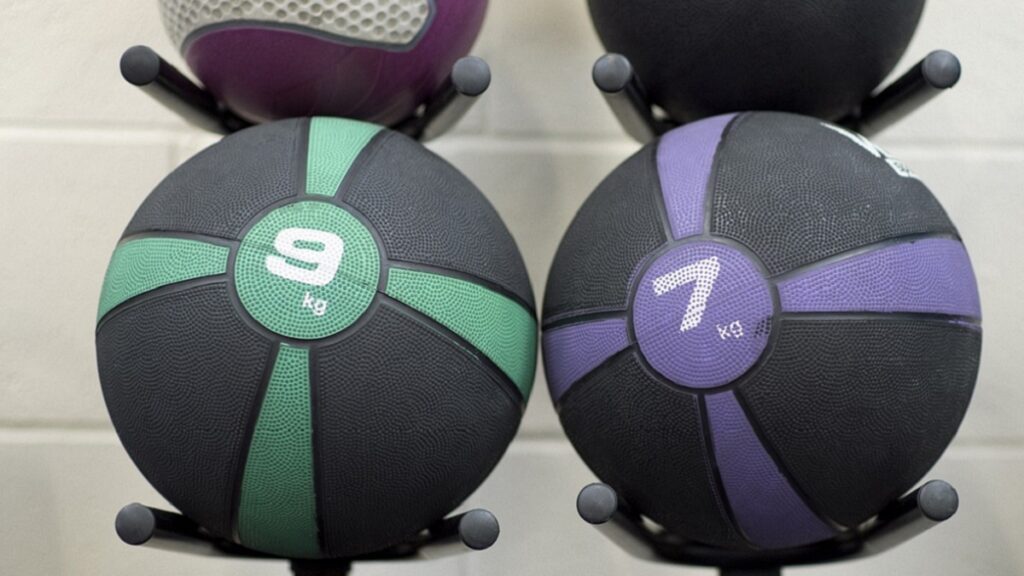Those with frozen shoulders know they are challenging to overcome. That’s because they’re, in most cases, immovable. This illness holds you captive with its radiating and clutching pains. However, with these exercises to break up scar tissue in shoulder, you can heal the frozen shoulder and become fit again.
Swelling, discomfort, and stiffness can signal a possible scar tissue. Pendulum and towel stretches are exercises for breaking the scar tissue in the shoulder. Also, surgery can break the scar tissue on the shoulder. You can also use a closed manipulation to break any adhesions on the shoulder.
Here, we’ll learn several efficient exercises to break up scar tissue in the shoulder and have other scar tissue questions answered. Read to the end.
Exercises to Break up Scar Tissue in Shoulder
More than any other body portion, the shoulder has a full range of motion. The glenohumeral joint, which connects the top of the humerus to the glenoid cavity of the scapula (shoulder blade), serves as its primary pivot point.
Frozen shoulders can cause shoulder pain that makes it challenging to move. However, they usually only get worse if you stop using them. Therefore, stretching or a massage for frozen shoulders may be helpful. Also, keep moving even though it might be challenging to prevent your shoulder from entirely freezing.
Here are some shoulder exercises to break up the scar tissue after seeing your doctor about a treatment plan.
Pendulum Stretch
The stretch can help you in severe agony to relax your shoulder muscles during any daily activity organically.
So, allow the affected arm to dangle gently while moving it in a circle. You can also extend the circle gently as you recuperate or include a light dumbbell in your practice. Leaning over and placing your hand on a high stool or other sturdy surface is beneficial.
Fingertip Walk
While facing any wall, stand not more than three-quarters of the length of your arm. Have your fingers on the wall (at the waist level) and move them above your head to the pain level. While at it, bend the elbows a little bit. Let the tips of your fingers do the work while your shoulders relax.
Towel Stretch
Holding the ends of the hand world horizontally behind your back, pull the hurting arm (upwards) using the excellent arm – the towel acts as a link. Gently give the hurting arm a lengthy stretch.
For a deeper stretch, drape (gently) your towel over the healthy shoulder. Using the hurting arm, gently pull your towel downwards.
Chest Opener
Standing a foot away from a wall with the injured shoulder, put your hand against the house wall (chest level). Turn slowly and keep your distance (far away to the best of your ability) while maintaining a flat palm against the wall. While in that position and keeping a reasonable distance from the wall, pause. After taking a deep breath, turn around to face the wall again.
Stretch Your Body Across its Width
You can perform this workout while seated or standing. To do stretch exercises to break up scar tissue in shoulder, gently reach the front of the body (across) using the injured arm.
Carefully lifting the arm from the elbow with your unaffected hand, apply pressure (lightly).
Stretched Out Above (Overhead)
First, place your hands by your sides while lying flat on your back. As you inhale deeply, slowly raise your arms (above the head) as high as possible.
Breathe in, then gradually lower your hands back down. Stretch gradually by extending your reach a little bit more each time.
Armpit Stretch
Locate a counter or shelf approximately chest height. Place both palms down, and place both arms flat on the ground. Stretch the area under your arms by slowly bending your knees to do armpit stretch exercises to break up scar tissue in shoulder.
Each time you bend, bend more.
Outward Rotation
Hold an exercise band made of rubber with your hands. Have the elbows at your sides (90 degrees). They should also be close to each other while you are holding the rubber. Rotate your affected arm’s lower half outward gently and hold that position for about 5 sec.
Aim for a between two and three-inch rotation of your arm.
Puppy Pose
Put one end of the rubber exercise band around the door handle while standing beside a closed door. Hold the band’s opposite end in your affected arm’s hand and slowly draw it between two and three inches toward your body to do exercises to break up scar tissue in shoulder.
While on all fours, have the hips higher than your knees and your neck above your wrists. Maintaining the hips in that position, slowly advance your hands.
Breathe and gently lie on the ground on your chest once you’ve extended as far as possible. Hold for 30 to 60 seconds to allow your arms and spine to extend.
How Do You Break Scar Tissue in Your Shoulder?
The shoulder is fully extended to release (cut) the scar tissue during surgery. Cutting the tight ligaments and removing the scar tissue from the shoulder can be accomplished with arthroscopic surgery. You might be given painkillers (shots) following surgery to engage in physical rehabilitation.
NSAIDs and steroid injections are used to relieve pain. Physical therapy and steroid injections can help you move more freely.
Sometimes it takes a few weeks to see results. On the other hand, complete healing could take up to a year or about nine months. Physical therapy, which involves exercises to break scar tissue in shoulder, is demanding and must be performed daily.
If left untreated, the problem frequently graduates naturally and gradually loses motion within two years. Menopause, diabetes, and thyroid issues are possible causes of frozen shoulders and should be treated.
If nonsurgical treatment options are ineffective, surgery is advised. Also, anesthesia is used during the shoulder arthroscopy operation.
What Does Scar Tissue Feel Like in the Shoulder?
Swelling, discomfort, and stiffness are typical signs and symptoms of scar tissue in the shoulder. Over time, scar tissue forms when the muscles in your shoulder joint enlarge and tighten. In such cases, your shoulder joint doesn’t have enough room to rotate properly. If you’re between 40 and 60 years, you have a higher chance of developing the illness.
So, consult a physician if your shoulder is sore and stiff. Your range of motion will be evaluated through a physical examination. In addition, your doctor will watch as you carry out particular motions. He will also gauge your shoulders’ range of motion by having you contact the shoulder across from you with your hand.
Scar tissue may develop in two distinct ways. First, the body produces scar tissue to ‘Glue’ the broken portions of muscles, tendons, or ligaments together after it has been torn or crushed. That’s a crucial step in the healing process.
The second, more typical cause of scar formation is inadequate oxygenation of soft tissues within the body (Hypoxia).
Contrary to popular belief, hypoxia occurs frequently. Hypoxic situations include bad posture, athletic activities, recurrent use, and persistent pressure (like sitting). Blood flow to the tissue is decreased as muscular tension rises. Because blood provides oxygen to muscles, normal blood flow is essential. Hypoxia results from low oxygen levels in the blood.
Muscles that are hypoxic accumulate free radicals. Unfortunately, cells that create scar tissue are drawn to free radicals. These cells start laying down scar tissue, which over time, starts to impair the muscles, tendons, ligaments, fascia, and nerves in the area.
How Do You Break Up Adhesions in Your Shoulder?
By performing closed manipulation on the affected area, adhesions can be released. The doctor flexes the elbow at the shoulder joint during closed manipulation to remove adhesions and ease the stiff joint; this is done by removing scar tissue. The technique aims to increase the range of motion.
If alternative alleviation measures have proven ineffective, your doctor may advise closed manipulation. For certain people, this technique might reduce pain and stiffness. Others still have some shoulder joint pain and edema. If the closed manipulation is unsuccessful, arthroscopic surgery might be necessary.
But when performing the exercises to break up scar tissue in shoulder, there are a few issues to be mindful of. Although complications are uncommon, no surgery is fully risk-free. Your doctor will go over a list of potential problems before doing a shoulder manipulation, which may include:
- Pain and nerve damage
- A healthy tissue injury
- Joint instability or stiffness
- Response to the anesthetic used
What Is the Fastest Way to Get Rid of a Frozen Shoulder?
Call a doctor if you’ve frozen shoulders to ensure you get the proper therapy. Physical therapy can assist you in managing your discomfort and improving shoulder motion so that you can resume your regular activities faster.
A frozen shoulder can be avoided when an accident renders the shoulder incapable of movement. Anyone who has sustained an injury should consult a physician about exercises to keep the shoulder joint capsule mobile and flexible.
However, it’s necessary to know that frozen shoulder symptoms might continue from 18 months to three years. Even without therapy, most persons with frozen shoulders regain normal movement and function within two years.
Most frozen shoulder conservative treatments focus on minimizing shoulder stiffness and preserving as much range of motion as feasible.
Does Massaging Scar Tissue Break It Down?
Massage therapy and regular stretching can considerably reduce your pain from frozen shoulder syndrome.
Your muscles can relax, and the inflammation will decrease as the blood supply to the area increases. So, it can lessen swelling and discomfort across the affected area, not only in the shoulder.
Usually, a reduction in pain results in an expansion of the range of motion. So, besides light exercises to break up scar tissue in shoulder, do also consider having a massage.
Can You Massage Scar Tissue Away?
Yes, you can massage scar tissue away. Although regular massages from a professional may not be possible, they are helpful for frozen shoulders. Professional massages can be pricey and time-consuming, making upkeep challenging. Due to this, you can learn how to massage a stiff shoulder at home.
Using a foam roller is one of the most remarkable ways to massage your shoulder. Leaning on a table or counter, placeholder injuries can occasionally bring on this condition in your shoulder, extending your arm as if you were reaching for something while gently rocking back and forth.
By inserting it in the space between your shoulders and neck, you can also use this instrument to massage your shoulder softly.
If you’d rather not use a foam roller, stroking the shoulder and arm with your good hand works well for treating a frozen shoulder, too. Slowly move your arm through a broad range of motion as you massage the shoulder muscles to gently stretch the muscles in your shoulder and the surrounding area.
Using modern digital massage gadgets can also provide relief for some patients. They come in various sizes and forms and often move in a pulsating or vibrating fashion.
It may apply pressure to the trigger points in your shoulder, reducing tension and enhancing local blood flow. That can be a practical choice if you’ve got a restricted range of motion due to your pain.
Nevertheless, consult your doctor before incorporating these massages into your regular schedule.
Can Stretching Break up Scar Tissue?
Yes, stretching will help to break up the scar tissue. It is a common technique to assist with scar tissue remodeling. The wounded tissues’ range of motion can be improved and lengthened by stretching.
Your physical therapist will probably include scar massage and stretching in your rehabilitation regimen if you’ve just had an injury or surgery.
Stretches can be crucial exercises to break up scar tissue in shoulder during the healing process.
Most PTs concur that extended, low-load stretching (slow, moderate stretching held for a long period) is also required to fully assist you in remodeling scar tissue.
What Causes Shoulder Scar Tissue?
When the range of motion in the shoulder joint is compromised, a frozen shoulder develops. This ball-and-socket joint’s surrounding capsule contracts. When adhesions, or bands of scar tissue form, the shoulder becomes stiff and difficult to move without grunting.
Movement is limited when there is discomfort. As a result, there may be an increase in stiffness and eventual impairment of shoulder movement. Additionally, and not by chance, your supply of ibuprofen may be depleted simultaneously, so much for the joint in the body that typically enables the most motion!
A Shoulder injury can occasionally bring on this condition. However, most frequently, risk factors point to a tendency rather than a specific cause.
How Do You Break Up a Scar Tissue in Your Shoulder Without Surgery?
Several physical therapy techniques and exercises to break up scar tissue in shoulder can remove scar tissue without requiring surgery. Instrument-assisted soft tissue mobilization is considered one of the most efficient techniques (IASTM). Metal tools are used in this method.
The instruments enable therapists to apply therapeutic pressure and are made to fit particular body parts. This pressure assists in releasing adhesions.
IASTM can also provide several other significant advantages, including:
- Improvement of blood flow to the area where the adhesion is located, reducing pain at the scar’s site. That can aid in removing toxins from the body that cause discomfort.
- Enhancing soft tissue function: The body’s many structures comprise soft tissue implying that adhesions can form in various places. IASTM helps soft tissue that has produced scar tissue to function better.
- Increasing the joint’s range of motion: Soft tissue scarring often makes it more challenging to move a joint normally. So, IASTM enhances joint range of motion (ROM).
What Are the First Signs of a Frozen Shoulder?
The following are the earliest signs of a frozen shoulder, which you’ll notice earlier before the effects develop.
- Every time you try to move your shoulder, you experience pain.
- Stiffness makes moving your shoulder challenging.
- The upper arm hurts.
- Shoulder pain prevents side sleeping
- Inability to sleep.
When you notice two or three of these symptoms, immediately visit your doctor or physical therapist.
How Do You Permanently Cure a Frozen Shoulder?
You must heed the doctor’s instructions and do exercises to break up scar tissue in shoulder to heal a frozen shoulder permanently. If not, your doctor may suggest surgery that completely resolves the frozen shoulder problem.
Without therapy, scar tissue can stay in your body for a long time. Physical therapists, for example, can assist you in removing scar tissue, allowing you to recover from surgery or an injury with less stiffness and pain.
FAQs
What Foods Should You Avoid with a Frozen Shoulder?
With a frozen shoulder, avoid frozen foods, fizzy drinks, fast and stale foods, packed chips, popcorn, products made with white flour (refined flour), ice cream, and any stimulant like tea, coffee, or alcohol.
Also, avoid strenuous activities, carrying heavy weights, sleeping through the night or waking up late, spending excessive time in chilly places, or missing meals.
Winding Up
Learning the exercises to break up scar tissue in shoulder is an excellent step in your shoulder recovery. In addition to the methods used in the physical therapy session, these exercises must be done three times a day for 20 sets to be effective.
You are guaranteed optimal form and optimum effectiveness with a personal trainer’s help, which will hasten your recovery time. A trainer can also include your frozen shoulder in a workout plan to prevent muscle problems.
Incase of any queries please feel free to contact us.



